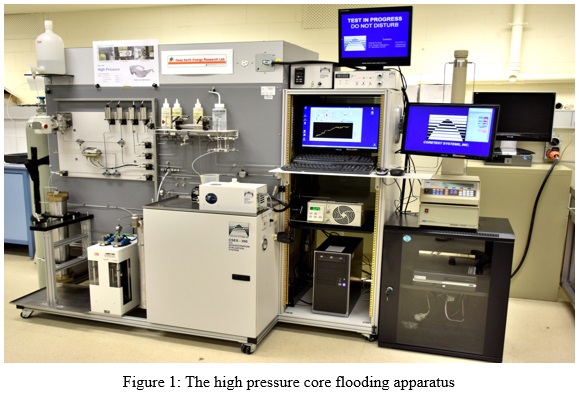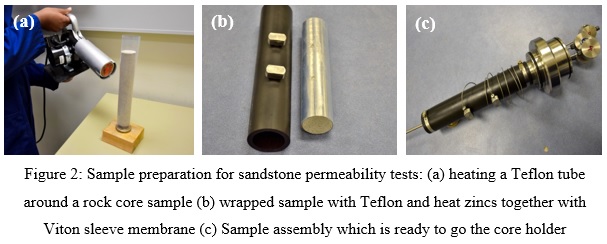Today it has become a must requirement to have proper CO2 emission control techniques to create a safer atmosphere for human beings. Geosequestration of CO2 in deep saline aquifers is one of the promising measures due to its high storage capacity and ability to provide a longer life-span for the injected CO2. However, exposure to CO2 causes the mineral composition of the aquifer to be changed, which affects the mineralogical and micrological structure of the aquifer’s rock and consequently changes its flow and strength properties. Therefore, this study has been aimed to identify effect of CO2 sequestration on aquifers flow and mechanical properties with giving special consideration on the CO2 injection induced geo-chemical reactions in the aquifer.
This project is funded by Australian Research Council (ARC) and a high pressure core flooding apparatus (Fig:1) is used to determine the flow properties through Warwick sandstone cores taken from Brisbane Australia, as the representative of reservoir rock.. Either 25mm or 38mm in diameter rock cores up to 300 mm in length can be tested under in-situ temperature and stress conditions of deep saline aquifers (20 to 150oC temperature, up to 70 MPa overburden pressure and up to 42 MPa injection pressure). Injection of CO2, brine and water can be carried out either at a constant pressure or a constant flow rate conditions and the pressure development along the sample can be monitored. The preparation of samples and sample assembly which is placed in the core holder inside the oven of this apparatus has been shown in the Fig:2. Chemical reactions of sandstone samples are tested using SEM and XRD analysis conduct for the samples immerged in carbonated brine for long time period in pressure chambers.


